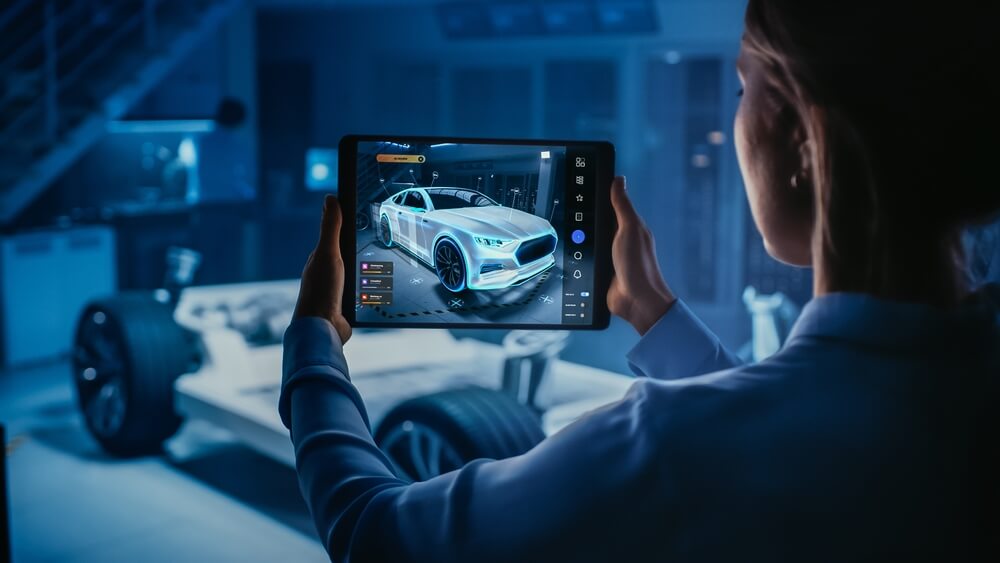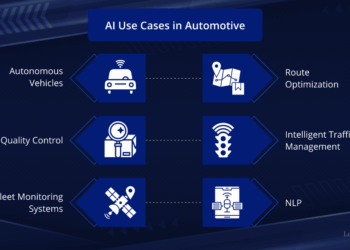The automotive industry is experiencing a significant transformation, with connected cars leading the charge. These vehicles, equipped with internet connectivity and smart technology, seamlessly integrate with a range of smart devices, creating an entirely new experience for drivers and passengers alike. The rise of connected cars is shaping the future of transportation, offering enhanced convenience, safety, and entertainment. Through the integration of smart devices, connected cars enable a level of interactivity that was once unimaginable, allowing vehicles to become an extension of users’ digital lives.
In this article, we will explore how connected cars work with smart devices, the benefits of this integration, and the technologies that make it all possible. From infotainment systems to vehicle monitoring and automation, we will examine the key features that are transforming modern driving. Additionally, we’ll look at the potential challenges and the future of connected vehicles.
A. What Are Connected Cars?
Connected cars refer to vehicles that are equipped with internet access and a range of communication technologies, enabling them to exchange data with other devices, networks, and even other vehicles. This connectivity is achieved through various technologies such as Wi-Fi, Bluetooth, 4G/5G cellular networks, and more. The primary goal is to enhance the driving experience by making the vehicle smarter, safer, and more efficient.
A.1. Key Technologies Behind Connected Cars
-
Telematics: Telematics refers to the systems that allow vehicles to send and receive information. This includes GPS navigation, real-time traffic updates, and the transmission of diagnostic data. It can also be used for tracking the car’s location or even monitoring the vehicle’s performance remotely.
-
In-Vehicle Connectivity: Vehicles are equipped with Wi-Fi and Bluetooth to allow seamless communication with smartphones, tablets, and other smart devices. This connectivity helps drivers stay connected to their digital ecosystem, ensuring that apps, music, messages, and other features are always accessible.
-
Vehicle-to-Vehicle (V2V) Communication: V2V communication allows cars to communicate with one another, sharing information about road conditions, speed, and other traffic-related data to improve safety and efficiency on the road.
B. How Connected Cars Integrate with Smart Devices
The integration of connected cars with smart devices opens up a world of possibilities for drivers. By leveraging smart technologies, connected cars enhance convenience, security, and the overall driving experience. The integration is achieved through various platforms, apps, and systems that allow seamless communication between the car and a range of devices.
B.1. Smartphone Integration
One of the most common ways connected cars interact with smart devices is through smartphones. Most modern vehicles support smartphone integration platforms such as Apple CarPlay, Android Auto, and MirrorLink, allowing drivers to use their phones’ features directly from the car’s infotainment system.
-
Apple CarPlay: Apple CarPlay allows iPhone users to connect their devices to the car’s infotainment system. Through CarPlay, users can access their phone’s apps, including maps, music, messaging, and even voice assistants like Siri, all through the car’s screen.
-
Android Auto: Android Auto offers similar functionality for Android smartphone users, allowing them to access apps like Google Maps, music streaming services, and text messages from the car’s dashboard.
-
Hands-Free Operation: Both platforms support voice recognition, so drivers can make calls, send texts, or navigate without taking their hands off the wheel. This hands-free functionality contributes to safer driving, reducing distractions and enhancing focus on the road.
B.2. Remote Vehicle Management via Mobile Apps
Many automakers now offer mobile apps that allow owners to remotely monitor and control their vehicles. These apps provide a wealth of features, from checking the vehicle’s location to remotely locking and unlocking doors, starting the engine, or adjusting the climate control.
-
Remote Start and Stop: Some apps allow users to start or stop their vehicles from a distance, which can be especially useful in cold or hot weather conditions. This feature can also be used to preheat or cool the car before getting inside.
-
Vehicle Diagnostics: Connected cars can transmit real-time diagnostic data to the owner’s smartphone, alerting them to any issues with the vehicle. This can include everything from tire pressure warnings to more serious mechanical problems, allowing drivers to address issues before they become major concerns.
-
Tracking and Security: Vehicle tracking features enable owners to locate their car if it is stolen or lost. Many apps also include a geo-fencing feature, alerting the owner if the vehicle leaves a predefined area.
B.3. Integration with Smart Home Devices
Connected cars can also interact with smart home devices, creating a seamless integration between the car and the home. This interaction offers a level of convenience that brings smart living into the car as well.
-
Smart Thermostats: Imagine arriving home to a perfectly heated or cooled home because your car communicated with your home’s smart thermostat. Connected cars can send signals to smart thermostats to adjust the temperature based on the vehicle’s proximity, so your home is always at the perfect temperature when you arrive.
-
Lighting and Security Systems: Some vehicles can communicate with home lighting and security systems. For instance, when the car approaches, it can trigger outdoor lights to turn on, ensuring a well-lit driveway or entryway. Additionally, the car can integrate with home security systems, allowing the driver to check security cameras or arm the alarm directly from the car.
-
Smart Appliances Control: Beyond lighting and thermostats, connected cars can interact with other smart appliances, such as refrigerators, entertainment systems, and coffee makers, providing users with a fully integrated smart living experience.
C. Enhancing Safety with Connected Car Features
The integration of smart devices with connected cars not only boosts convenience but also enhances safety. AI and real-time data play a crucial role in ensuring that these systems function optimally and help prevent accidents.

C.1. Real-Time Traffic and Road Alerts
Connected cars can receive real-time updates about traffic conditions, road closures, accidents, and weather-related hazards. This information is gathered from a network of sensors, satellite data, and other connected vehicles. By sharing this data, connected cars help create a safer driving environment.
-
Traffic Monitoring: AI-powered navigation systems can offer alternative routes based on real-time traffic information, allowing drivers to avoid congested areas and potential delays.
-
Weather Alerts: Connected cars can warn drivers of severe weather conditions, such as heavy rain, snow, or fog, which could impact visibility and road traction.
-
Hazard Detection: Vehicle-to-vehicle (V2V) communication allows cars to alert one another about upcoming hazards, such as sudden stops or accidents ahead.
C.2. Advanced Driver Assistance Systems (ADAS)
Connected cars often feature a range of Advanced Driver Assistance Systems (ADAS), which rely on AI and connectivity to enhance vehicle safety. These systems are designed to assist the driver by providing warnings or even taking control of the vehicle when necessary.
-
Adaptive Cruise Control: This feature automatically adjusts the vehicle’s speed to maintain a safe distance from the car in front, making highway driving more comfortable and reducing the likelihood of rear-end collisions.
-
Lane Departure Warning: AI-powered systems can detect when the vehicle is unintentionally drifting out of its lane and alert the driver to correct the course, thus preventing lane-change accidents.
-
Automatic Emergency Braking: If a collision is imminent, connected cars equipped with this system can apply the brakes autonomously, reducing the severity of the impact or avoiding the crash altogether.
D. The Future of Connected Cars
The future of connected cars looks promising, with innovations continuing to emerge that will enhance the driving experience even further. As technology evolves, we can expect more sophisticated features and greater integration between vehicles, smart devices, and infrastructure.

D.1. The Rise of Autonomous Vehicles
While connected cars today are often semi-autonomous, the future holds the promise of fully autonomous vehicles. These vehicles will rely heavily on AI, V2V communication, and advanced sensors to navigate without human intervention. The integration of connected car systems with autonomous driving technology will revolutionize how we view transportation, making it safer, more efficient, and more accessible.
D.2. 5G Connectivity
The rollout of 5G technology will significantly enhance the capabilities of connected cars. With faster speeds and lower latency, 5G will allow for quicker data exchange between vehicles, smart devices, and infrastructure, enabling more real-time interactions. This will lead to more reliable and responsive connected car systems, with improved safety, entertainment, and navigation features.
D.3. The Internet of Things (IoT)
The growing network of interconnected devices known as the Internet of Things (IoT) will further enhance the connected car experience. In the future, vehicles will seamlessly interact with a wide range of IoT devices, from smart homes to urban infrastructure, creating a fully integrated and automated transportation ecosystem.
Conclusion
Connected cars are no longer a futuristic concept—they are quickly becoming an integral part of modern driving. The ability to integrate with smartphones, smart home devices, and a wide array of other connected systems is transforming the way we interact with our vehicles. From enhanced safety features to real-time traffic updates and the convenience of remote vehicle management, connected cars are reshaping the driving experience for the better.
As the automotive industry continues to embrace smart technology, the future holds even more exciting possibilities. With advancements in AI, 5G, and autonomous driving, connected cars will evolve into even more intelligent, efficient, and safe machines. The seamless integration of vehicles with smart devices will continue to push the boundaries of what’s possible, making transportation smarter, safer, and more connected than ever before.















